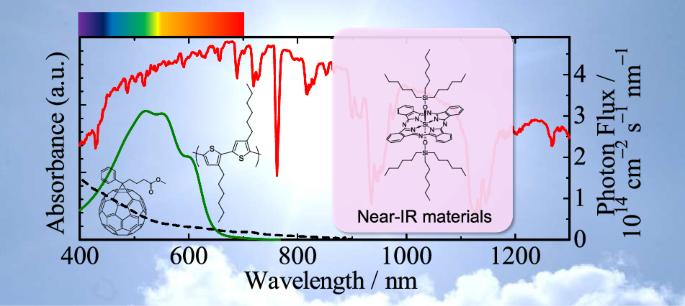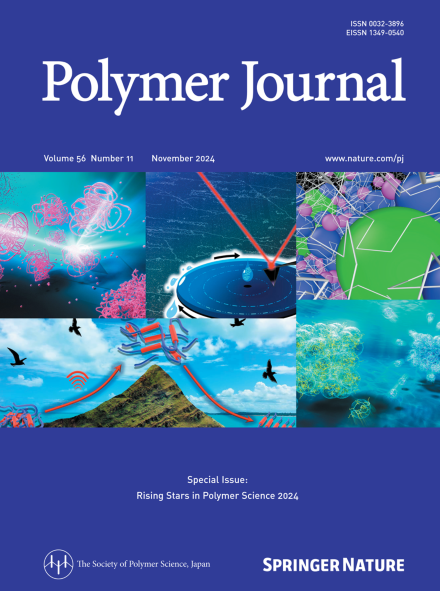基于光谱和器件分析的三元共混聚合物太阳能电池界面工程
IF 2.7
4区 化学
Q3 POLYMER SCIENCE
引用次数: 0
摘要
聚合物太阳能电池作为下一代太阳能电池已经得到了广泛的研究,它包括在光伏层中提供电子的共轭聚合物和电子接受分子的混合物。为了改善光电流的产生,有必要在太阳能中收集尽可能多的光子,太阳能分布在包括紫外线,可见光和近红外(近红外)区域在内的宽波长上。然而,通过使用二元混合聚合物太阳能电池覆盖如此宽的太阳光谱本质上是困难的,因为大多数有机材料(例如,共轭聚合物)具有狭窄的吸收带宽(小于200nm)。三元共混聚合物太阳能电池可以通过将近红外光收集材料与电子给体共轭聚合物和电子受体分子相结合来克服这一限制。本文简要介绍了聚合物太阳能电池的研究进展,并对三元共混聚合物太阳能电池进行了详细的介绍。结合近红外材料的三元共混聚合物太阳能电池是有效提高光伏性能的最有前途的方法之一,因为它们可以延长光捕获波长范围,同时改善电荷传输。本文简要综述了聚合物太阳能电池的研究进展,并介绍了近年来在近红外染料分子三元共混聚合物太阳能电池方面的研究进展。特别重要的是在三元共混聚合物太阳能电池的供体/受体界面放置近红外染料分子的界面工程。本文章由计算机程序翻译,如有差异,请以英文原文为准。

Interface engineering for ternary blend polymer solar cells based on spectroscopic and device analyses
Polymer solar cells, which include a blend of electron-donating conjugated polymers and electron-accepting molecules in the photovoltaic layer, have been widely studied as next-generation solar cells. To improve photocurrent generation, it is necessary to harvest as many photons as possible in solar light, which distributes over a wide wavelength including the ultraviolet, visible, and near-infrared (near-IR) regions. However, covering such a wide solar spectrum by using binary blend polymer solar cells is inherently difficult because most organic materials (e.g., conjugated polymers) have a narrow absorption bandwidth (less than 200 nm). Ternary blend polymer solar cells can overcome this limitation by combining near-IR light-harvesting materials with the electron-donor conjugated polymer and the electron-acceptor molecule. In this review, recent progress in the development of polymer solar cells is briefly overviewed, followed by a detailed description of ternary blend polymer solar cells. Ternary blend polymer solar cells incorporating near-IR materials are among the most promising approaches for effectively improving photovoltaic performance because they can extend the light-harvesting wavelength range and simultaneously improve charge transport. Here, we briefly review the progress in polymer solar cells and describe our recent studies on ternary blend polymer solar cells incorporating near-IR dye molecules. Of particular importance is the interfacial engineering for the placement of near-IR dye molecules at the donor/acceptor interface in ternary blend polymer solar cells.
求助全文
通过发布文献求助,成功后即可免费获取论文全文。
去求助
来源期刊

Polymer Journal
化学-高分子科学
CiteScore
5.60
自引率
7.10%
发文量
131
审稿时长
2.5 months
期刊介绍:
Polymer Journal promotes research from all aspects of polymer science from anywhere in the world and aims to provide an integrated platform for scientific communication that assists the advancement of polymer science and related fields. The journal publishes Original Articles, Notes, Short Communications and Reviews.
Subject areas and topics of particular interest within the journal''s scope include, but are not limited to, those listed below:
Polymer synthesis and reactions
Polymer structures
Physical properties of polymers
Polymer surface and interfaces
Functional polymers
Supramolecular polymers
Self-assembled materials
Biopolymers and bio-related polymer materials
Polymer engineering.
 求助内容:
求助内容: 应助结果提醒方式:
应助结果提醒方式:


